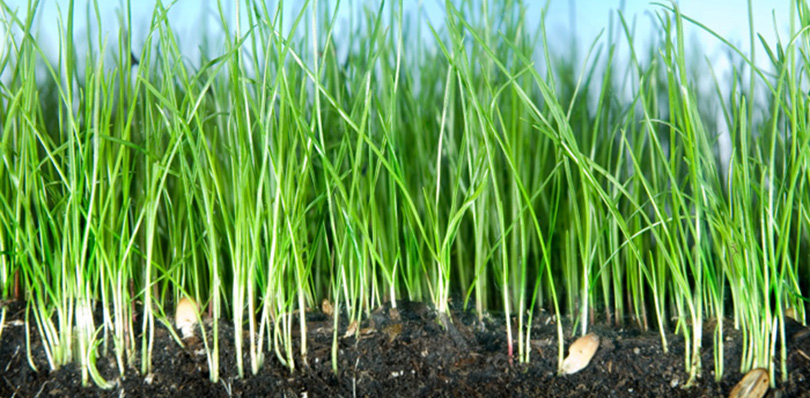
The optimal time to apply fertilizers is when the grass roots and blades are actively growing. Follow the manufacturer’s instructions; check the calibration of your spreader, as well as the square footage of your lawn, to ensure that you are applying the right amount. Remember, more is not necessarily better with fertilizers, applying too much may “burn” your lawn and promote thatch formation, disease, and insect infestation.
Keep in mind that over-watered lawns, those subject to heavy rainfall, and sandy soils are more prone to leached nutrients. The use of slow-release and water-insoluble fertilizers will help reduce leaching and keep nutrients available to the plants longer. Also, when mowing your grass, mulch the clippings back into your lawn. Grass clippings left on the lawn over the course of a year will return about 1 pound of nitrogen per 1,000 square feet.
The basic guidelines of fertilizing include:
Growth season occurs during the early to mid-fall, when weed competition is minimal, and fertilizing produces healthy roots. This timing also allows plants to build upon needed carbohydrate stores with just a moderate amount of top-growth. You should divide the annual amount of fertilizer and apply two-thirds in early fall and the remainder in mid to late spring, after the lawn’s initial green-up. For low-maintenance lawns, apply 2 pounds of nitrogen per 1,000 square feet; higher-maintenance lawns may need 3 to 4 pounds of nitrogen per 1,000 square feet. This may require an adjustment, given your specific growing environment, soil test results, the lawn’s condition, and the type of fertilizer you use. For example, Kentucky bluegrass and Perennial ryegrasses require more fertilizer than the fescues. Consult your local Cooperative Extension Service (CSREES) for recommendations.
Southern lawns growing warm-season grasses, such as Bermudagrass, Zoysiagrass, St. Augustinegrass, Seashore Paspalum, Bahiagrass, Centipedegrass, and Carpetgrass, are most active and grow most vigorously in the heat of the summer. With warm-season grasses, the first fertilizer application should be made about three weeks after the initial spring green-up; then fertilize again later in the summer, but while the plants are still actively growing. Low-maintenance lawns will need about 2 to 4 pounds of N per 1000 square feet per year; whereas higher maintenance lawns will need 4 to 6 pounds of N per 1000 square feet per year. These suggestions may require adjustment depending on your specific growing environment, soil test results, the lawn’s condition, and whether you use a slow or fast-release type of fertilizer. Wait until warm-season grasses become dormant before fertilizing areas overseeded for winter color. Consult your local Cooperative Extension Service (CSREES)
The nitrogen fertilizers listed below are commonly available at nurseries and garden centers:
Fast-Release
Slow-Release